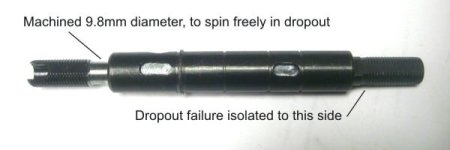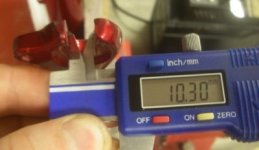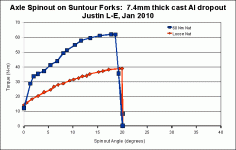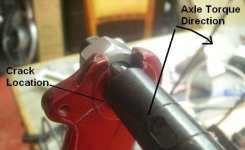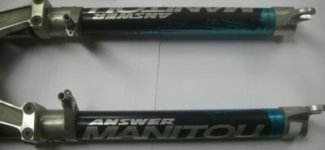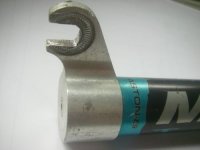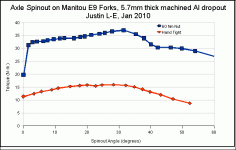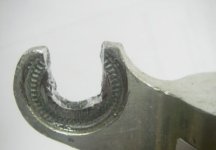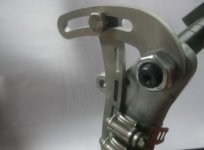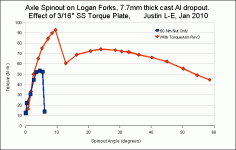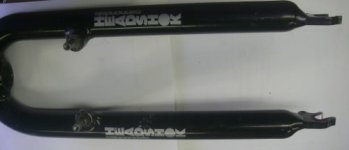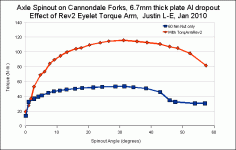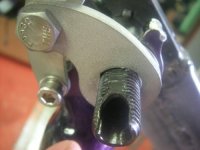dogman dan
1 PW
I wasn't thinking about the bolt breaking, but rather the effect Justin just demonstrated. The arms ability to pivot at the bolt allowing the lower portion to rotate, and then allow the clamp to slip down the fork. This effect may be less likely if the rotation slips the clamp up the fork? Presumably the fork gets thicker as you go up?
You can go crazy trying to think about all this, that's why try it and see is so valuable. Thanks Justin. 8)
Looking again at the #5 test, the arm is installed on the back, but it appears the rotation force was applied forwards. Now I'm going crazy thinking about it. Which way would the axle want to spin when throttle is put on? The wheel spins front to back, to roll forward. Does the axle tend then to rotate the opposite direction, back to front?
You can go crazy trying to think about all this, that's why try it and see is so valuable. Thanks Justin. 8)
Looking again at the #5 test, the arm is installed on the back, but it appears the rotation force was applied forwards. Now I'm going crazy thinking about it. Which way would the axle want to spin when throttle is put on? The wheel spins front to back, to roll forward. Does the axle tend then to rotate the opposite direction, back to front?


